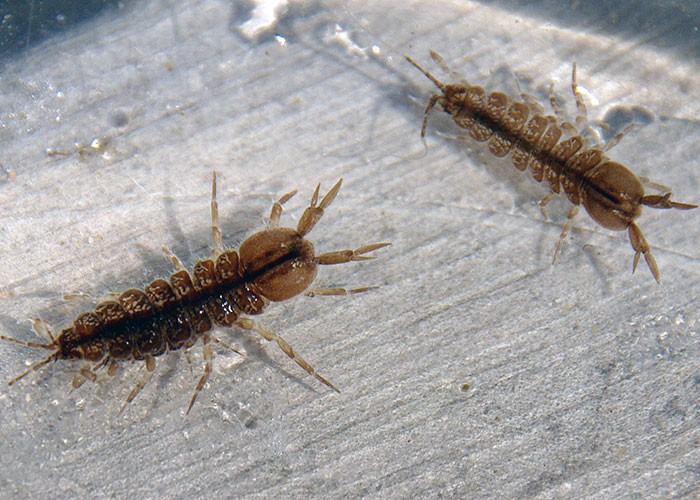Salutations, BugFans,
Water Sow Bug
Another foray into the world of the “almost-insects.” Like insects, Water Sow Bugs are Arthropods (jointed appendages), and like their terrestrial cousins, the sow/pill/potato bugs of previous BOTW fame, they are in the Order Isopoda (equal foot), a reference to their abdominal appendages.
There are three body segments—a cephalothorax (combined head and first segment of the thorax), a thorax (the next 7 segments) and an abdomen (everything after that). Jointed appendages? They’ve got plenty. Water sow bugs (WSBs) have 7 pairs of legs, one per segment of the thorax. The first pair is adapted for holding; the rest of these boots are made for walking. To that, add 6 short appendages on the underside of the abdomen, the final pair of which looks like two tails. One pair of antennae is long, and the other is short. WSBs are flattened for crawling under stuff, drab in color, and about ½” long.
Look for WSBs/Isopods under dead leaves and debris in shallow water. The more hiding places, the more WSBs. They are crawlers, designed to survive in low-oxygen and they also prefer the lighting to be low. Diet-wise, they are omnivore/scavenger/shredders. They eat little pieces of detritus from the pond floor, bits of dead or injured animals, and live and decaying plants. In turn, many aquatic animals eat WSBs.
On the underside of each of the segments of the thorax, at the base of each leg, is a short, inward projection; these combine to form a shallow chamber below the thorax. Female WSBs use this thoracic chamber as a brood chamber (or marsupium). She carries her eggs there, and later her young, for a little over a month until they can fend for themselves. During that time, she fans the “plates” that form the marsupium so that the eggs/young are properly oxygenated. That maternal solicitation is negated by the fact that she will sometimes eat her own offspring (and the siblings may cannibalize each other). About the common name—they were named sow bugs because someone (and the scribes do not record what he was smoking at the time) thought that the way the female cares for her young was reminiscent of sows caring for piglets.
Wood frogs owe a lot to WSBs. WSBs help to turn big pieces of dead plants and animals into little ones in ephemeral ponds. In the process, dead material is removed from the pond. Smaller chunks of material can be colonized by fungi and algae more easily, and these nutritionally-enhanced morsels of food are eaten by wood frog tadpoles and other herbivores.
If the worst that can be said of any of us, after we pass, is that we maybe cared a little too much for watercress, then we will have lived pretty blameless lives.
The BugLady
